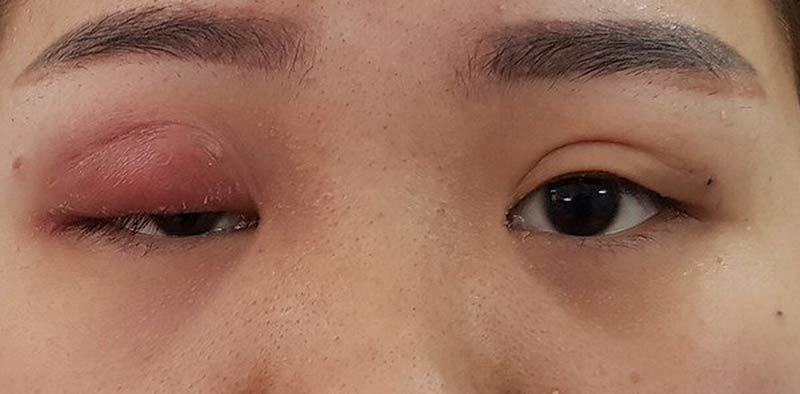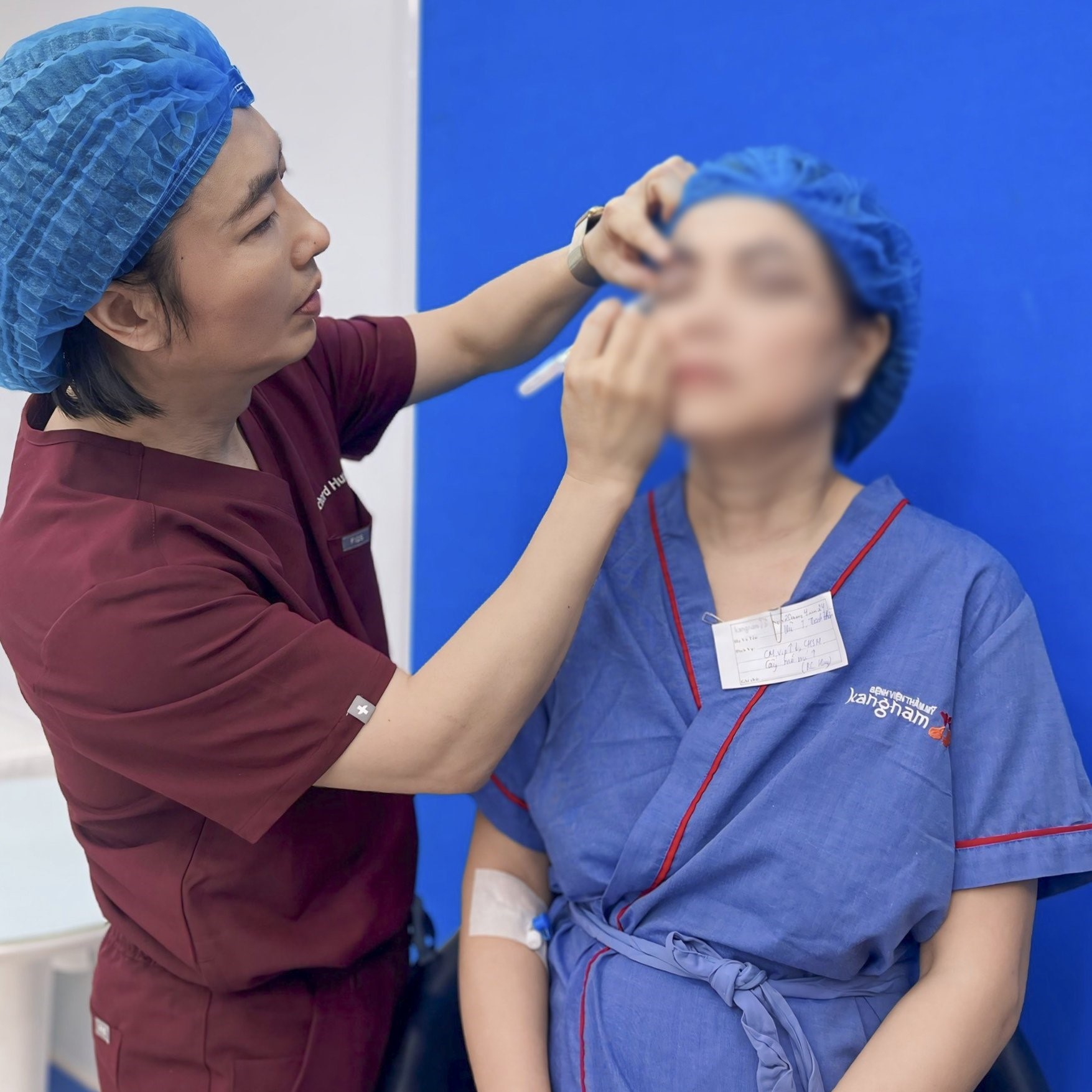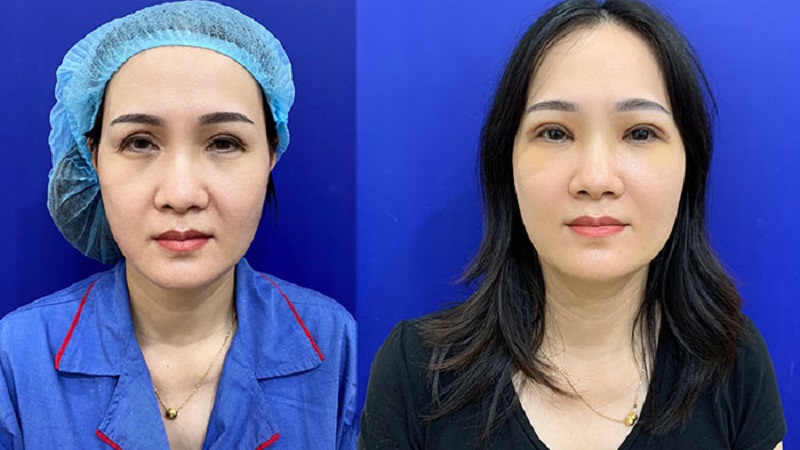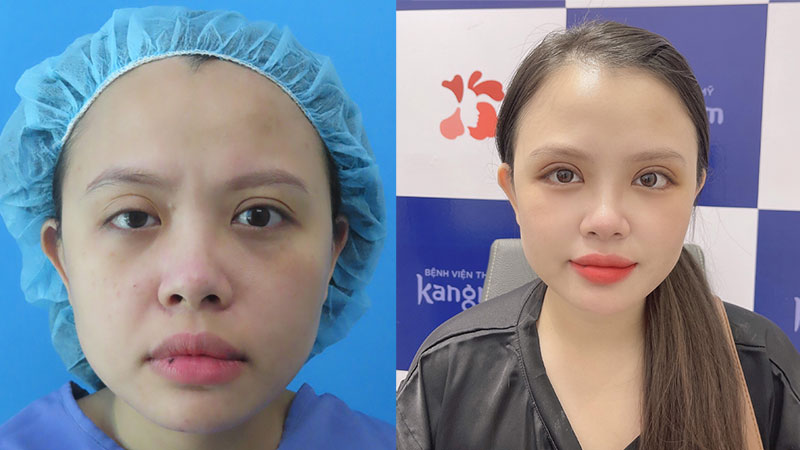Date posted: 26-10-2024 | Last updated : 26-10-2024

Eyelid issues or complications can directly impact both appearance and daily life. But what causes these problems, and what are the best solutions for correcting them? These questions will be thoroughly addressed by Dr. Richard Huy.
Defective eyelids not only take away the natural beauty of the eyes but also pose significant risks to vision. Conditions such as wide-eyed stares, difficulty closing the eyes can lead to dry eyes and infections or even more severe eye diseases. Corrective eyelid surgery is considered the optimal solution to address eyelid defects, restoring balance, harmony, and improving visual function.
- Insufficient surgical expertise: The success of eyelid correction surgery heavily relies on the surgeon's skill. Proper evaluation of the eyelid's skin condition, accurate calculation of how much excess skin and fat to remove, and the choice of appropriate suturing techniques require precision and a high level of expertise. Only experienced surgeons can provide an optimal treatment plan that ensures natural aesthetic results and minimizes potential complications.
- Unsafe Facilities: Aesthetic surgery, especially eyelid surgery, requires thorough preparation and a sterile environment. In non-standard facilities lacking modern medical equipment and proper examination protocols, the risks of post-surgical complications increase. Issues such as infections, bleeding, and poor scarring can arise.
- Post-Operative Care: Improper postoperative care also affects the aesthetic results. Infections, pus formation, and unsightly scars are common complications when care instructions are not followed correctly. To ensure a smooth and effective recovery, it is crucial to strictly adhere to the doctor's post-surgery guidelines.
Here are some signs of failed eyelid surgery caused by poor techniques performed at unreliable surgical facilities:
- Uneven Eyelids: One eyelid may appear larger than the other, or one eye may seem wide open while the other droops. This unevenness is often the result of inconsistent surgical techniques, leaving the patient with an imbalanced look that affects their facial aesthetic and confidence.
- Sunken, Drooping Eyes: Inexperienced surgeons may damage the levator muscle, which lifts the eyelid, leading to a sunken appearance and a loss of natural expressiveness in the eyes. This is a common complication that leaves many dissatisfied with their surgery outcome.
- Wide-Eyed Look: Incorrect calculation of proportions during surgery can result in eyes that appear too wide, showing too much of the sclera, or even cause the eyes to slant upward, negatively affecting both appearance and function.
- Visible Scars and Infection: If the suturing technique is not performed carefully, prominent scars may form, diminishing the aesthetics of the eyes. Additionally, improper post-operative care can lead to infections, resulting in pus formation and unsightly scarring.

Uneven or too large eyelids are a sign of failed surgery.
Case 1: Uneven or Overly Large Eyelids
For this case, Dr. Richard Huy will use the patient’s own skin tissue for grafting. The reason for choosing autologous skin tissue is that it offers the best compatibility with the patient’s body. This is also a safe option with no side effects. This technique corrects the overly trimmed eyelids, reduces eye retraction, and restores a balanced, naturally beautiful appearance.
Case 2: Sunken, Drooping, or Sagging Eyelids
For cases of sunken or drooping eyelids due to insufficient correction in a previous surgery, Dr. Richard Huy applies a levator muscle lifting technique. This method removes remaining excess skin and fat while strengthening the levator muscle, resulting in rounder, brighter, and more natural-looking eyes.
Case 3: Scarring from Eyelid Surgery
Improper suturing techniques may cause noticeable scarring. To address this, a revision surgery is performed to adjust the suture proportions, ensuring smooth wound healing and a more natural eye contour.
The surgical procedure must be performed in a controlled, sterile environment equipped with necessary tools to minimize risks during the operation.
Step 1: Examination and Consultation
This step is essential for the surgeon to diagnose the issue with the failed eyelid surgery. Only by accurately identifying the cause of the botched eyelid surgery can the surgeon devise the correct treatment plan.
Step 2: Measurement, Marking, and Anesthesia
Once a solution has been determined, the surgeon will measure and mark the area that requires correction. Local anesthesia is then administered to minimize any pain or discomfort the patient may feel during the procedure.

The doctor conducts, measures, and determines the proportion of eyes that need to be corrected
Step 3: Performing the Eyelid Revision Surgery
To correct the botched eyelid, the surgeon will need to reopen the incision to address the issue. The incision must be made with precision, minimizing invasiveness to ensure the best aesthetic result.
Step 4: Closing the Incision
The most important aspect of this step is that the surgeon carefully stitches the wound in a way that hides the scar. The skill of the surgeon in creating a seamless, hidden closure is key to achieving optimal cosmetic results.
Step 5: Post-Operative Care Instructions
At Dr. Richard Huy's clinic, after the procedure, clients receive detailed guidance on how to care for their eyelids post-surgery to ensure the best possible outcome.
Below are some common concerns addressed by Dr. Richard Huy regarding the correction of botched eyelid surgeries:
Typically, the ideal time to undergo eyelid revision surgery is about 3-6 months after the initial procedure. By this point, the previous wounds have fully healed, providing a better foundation for the surgeon to work on with greater precision. This reduces the risk of complications and ensures optimal cosmetic results. The skin of the eyelids is thin and sensitive, and repeated surgeries can lead to tissue hardening, which may affect the outcomes of future revisions. Therefore, regular follow-ups with a specialist are crucial to developing the most suitable treatment plan.

After about 3 - 6 months, the defective eyelid can be repaired
To prevent complications during revision eyelid surgery, it's crucial to follow these precautions:
- Research the aesthetic clinic thoroughly: As mentioned earlier, only licensed and high-quality clinics with proper certification meet the necessary medical standards to safely perform surgeries.
- Choose a highly qualified surgeon: The surgeon’s expertise and experience are critical to the success of the surgery. A skilled and meticulous surgeon can carefully measure and plan, ensuring a successful outcome and predicting the completion rate after the procedure.
- Follow post-surgery care instructions carefully: To achieve the desired aesthetic results, it’s essential to strictly follow the surgeon’s advice, especially regarding diet and daily activities during the recovery.

Kangnam is one of the best addresses for correcting defective eyelids
Hopefully, the above article can provide useful information for customers who want to learn about the service of correcting defective eyelids. If you have any questions about corrective eyelid surgery, you can contact Hotline 1900.6466 for advice from Dr. Richard Huy.